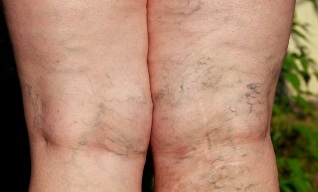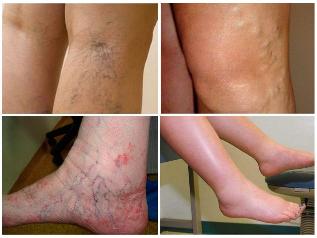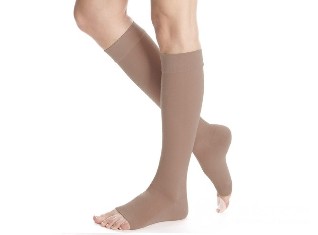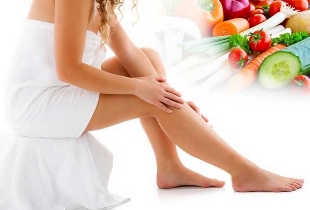Varicose veins of the lower limbs is a chronic condition of the veins, which is characterized by a thinning of their walls, the extension of the lumen, as well as the formation of aneurysm-sicut nodes. The most often varicose the disease affects the lower extremities? it is one of the most common pathologies – this suffers about 40% of women and 20% of men.

Causes and risk factors
Through the veins of the lower limbs, the blood flows upwards, i.e., the need to overcome the force of gravity. The current is supplied from the pressure, are located near the veins of tendons and other blood pressure. The movement of the blood through the veins of the lower limbs promotes and "muscle pump": with muscle movements of the legs are cut and compress veins, placebat ei pulsare so close to the blood upwards, as well as the reverse current preventing venous valves.
The weakness of the muscular layer of venous wall and failure device valve are the cause of the fact that under the influence of the action of "muscular pump" the blood begins to flow and in the opposite direction, i.e. downwards. This leads to increased pressure on the walls of blood vessels, the further development of the failure of the valve, the enlargement of the lumen of the vein and creation of nodes. Muscle fibers venous walls atrophy, disruption of nerve receptors that govern the venous tone, which, in turn, strengthens yet more manifestations of venous insufficiency.
The risk factors for the development of varicose veins of the lower limbs:
- hereditary predisposition?
- pregnancy?
- the obesity?
- daily prolonged stay in a sitting or standing?
- activity associated with lifting weights?
- the systematic wearing tight clothes, corsets?
- poor nutrition with a low content in the diet of fiber and vitamins.
- disorders of hormonal status.
In the prevention of varicose veins plays an important role active pursuits: sports (swimming, cycling, fitness), dancing, forced walks, etc.
Forms of the disease
On the basis of the characteristics of clinical manifestations, there are the following shapes of varicose veins of the lower limbs:
- serial defeat intradermal and subcutaneous veins with the absence of the reverse flow of blood?
- serial defeat of the veins of the lower limbs, accompanied by pathological blood flow?
- a common defeat vessels to the reverse flow of blood in superficial veins?
- a common defeat of vessels, accompanied by pathological restore the blood by the system of deep veins.

The stage of the disease
In 2000, the Russian phlebologists has become accepted classification of varicose veins of the lower extremities, denies any form of the disease, the degree of venous insufficiency, the presence or absence of complications. In accordance with this, there are three stage of varicose veins of the lower limbs:
- Stage payment. Patients do not require any complaints. While carrying out an inspection in one or both legs are on the surface are dilated veins.
- Stage subcompensation. Patients complain of night cramps, disorders of skin sensitivity (paresthesia) in the legs, the feeling of bloating. In the evening there is often swelling of legs, ankles and feet, disappear after a night's sleep. During the examination of the foot are well marked extensive varicose veins.
- The stage of decompensation. The above featured participating eczema, dermatitis. Skin pigmentation, dry, glossy, closely connected with the subcutaneous tissue.
The symptoms
The clinical picture of varicose veins of the lower limbs is determined by the stage of the disease. So, when compensated stage the only symptom of venous insufficiency – the appearance on the legs spider veins (telangiectasias).
Transfer of the disease in subcompensated stage is accompanied by the appearance of pain in the legs, swelling of feet and ankles, cramps in calf muscles. After your vacation in a horizontal position these symptoms stop.
More intense the clinical picture of varicose veins of the lower extremities is manifested by decompensated stage of the disease. Pain in the feet become permanent. The patients complain of itching of the skin, which is enhanced during the evening and night hours. Over time resulting dermatitis, eczema, hardhealed trophic ulcer. The stage is called, there are common symptoms: dizziness, lowering of blood pressure. Linked to deposit in extensive venous network of the foot of a large volume of blood.
Complication of varicose veins is phlebitis, thrombophlebitis, bleeding from varicose nodes, trophic ulcers, thromboembolism of pulmonary artery.
Diagnosis
The diagnosis of varicose veins of the lower extremities does not present difficulties. This is based on the typical clinical symptoms of the disease and data of objective examination.
For the assessment of the seriousness of the violations hemodynamics used instrumental methods of diagnosis:
- Doppler ultrasound of the veins of the lower limbs;
- duplex angioscanning it?
- rheovasography veins of the lower limbs.

Treatment
In the treatment of varicose veins of the lower limbs in accordance with the following methods or combination thereof:
- conservative therapy?
- sclerosing therapy?
- the surgery.
Conservative treatment of varicose veins of the lower extremities may be recommended in patients in the early stages of the disease, the purpose is the prevention of progression of chronic venous insufficiency. Also applies when subcompensated and decompensated stages of the disease when preparing the patient for surgery or in cases, when the use of other methods is contraindicated. Conservative treatment of varicose veins based on the application of phlebotonics, wearing compression stockings. In addition, patients were recommended to participate in exercise therapy, avoid large static loads.
Varicose veins of lower extremity, not complicated in a significant hemodynamic, can be used neuropathy compression sclerotherapy. The essence of the technique is to be administered into the affected vein the drug that causes the spasm. After that leg wear a compressive sock or perform bandaging leg with an elastic bandage, which allows you to maintain the walls of the veins in the dormientes situation. In a few days starts the welding process of the walls of veins. Compression garment you need to wear after sclerotherapy no less than a month and a half, until the time of education between the walls of the veins are quite dense adhesions.
In advanced stages of varicose veins of the lower limbs is the most effective method – surgery. Technical operating technology selected, on the basis of the stage of the disease, the form, the characteristics of hemodynamic disorders:
- laser photocoagulation for?
- radiofrequency coagulation;
- miniphlebectomy is?
- phlebotomy.
Possible complications and consequences
Complications of varicose veins develop mainly in the stage of decompensation. These include:
- phlebitis (inflammation extended veins);
- thrombophlebitis (inflammation of veins with the formation of the skylight blood clots);
- bleeding from the varicose knots?
- trophic ulcer?
- pulmonary embolism (PE).
The most often varicose the disease affects the lower extremities? it is one of the most common pathologies – this suffers about 40% of women and 20% of men.

Prognosis
Prediction of varicose veins of the lower limbs with early treatment auspicious.
Prevention
With the aim of prevention of varicose veins of the lower limbs you should avoid large static loads. If the job requires a long stay in an upright position either sitting, you will periodically need to take breaks in a small gym or even walking. After the working day, it is recommended to lie down, giving your legs a horizontal or overhead position.
In the prevention of varicose veins plays an important role active pursuits: sports (swimming, cycling, fitness), dancing, forced walks, etc.




































